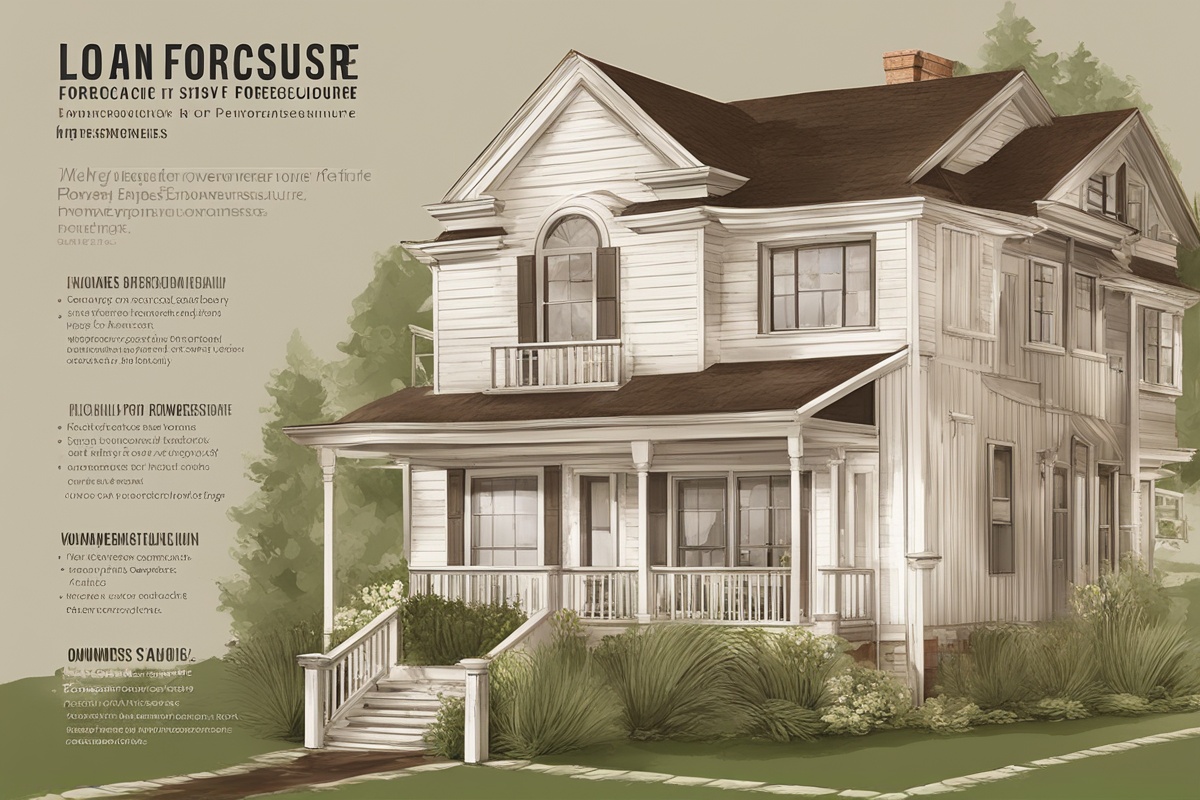Owning a home is a cornerstone of the American dream, but financial hardships can turn that dream into a nightmare when foreclosure looms on the horizon. If you’re struggling to make mortgage payments or have received a foreclosure notice, you’re not alone. Millions of homeowners face this challenge each year, but the good news is that there are actionable steps you can take to prevent foreclosure and protect your home. In this comprehensive guide, we’ll explore proven strategies for foreclosure prevention, resources for foreclosure help, and practical advice to help you navigate this difficult time. Whether you’re just starting to miss payments or are deep in the foreclosure process, there’s hope—and we’re here to walk you through it with clear, trustworthy insights.
Understanding Foreclosure: What It Means for Homeowners
Foreclosure is the legal process by which a lender repossesses a property due to the homeowner’s failure to make mortgage payments. It’s a devastating outcome for many, often resulting in damaged credit, loss of equity, and emotional stress. According to a report by the U.S. Department of Housing and Urban Development (HUD), over 250,000 homes entered foreclosure in 2022 alone (HUD, 2023). The process typically begins after a homeowner misses several payments, leading to a notice of default, and can culminate in the sale of the property at a public auction if unresolved. Understanding this process is the first step to seeking foreclosure assistance and taking control of your situation. Each state has different foreclosure timelines and laws, so it’s critical to familiarize yourself with local regulations to better prepare for the road ahead.
Why Homeowners Face Foreclosure and How to Spot the Signs Early
Foreclosure doesn’t happen overnight; it’s often the result of underlying financial struggles that snowball over time. Common causes include job loss, medical emergencies, divorce, or unexpected expenses that drain savings. A study by the National Association of Realtors found that nearly 40% of foreclosures are triggered by a sudden loss of income (NAR, 2022). Recognizing the early warning signs—such as missing a mortgage payment, dipping into savings to cover bills, or receiving late payment notices—can give you a head start in seeking foreclosure help. Don’t wait until the situation feels hopeless. The sooner you act, the more options you’ll have to prevent foreclosure and stabilize your finances.
Here are some early red flags to watch for:
- Missing one or more mortgage payments due to tight budgets.
- Receiving late payment notices or calls from your lender.
- Using credit cards to cover basic living expenses.
- Feeling overwhelmed by debt with no clear repayment plan.
Immediate Steps to Take When Facing Foreclosure
If you’re at risk of foreclosure, time is of the essence. The first and most important step is to communicate with your lender. Many homeowners avoid this out of fear or embarrassment, but lenders often have programs in place to provide foreclosure relief and work with borrowers to find solutions. According to a report by the Consumer Financial Protection Bureau, early intervention can significantly increase the chances of avoiding foreclosure (CFPB, 2021). Call your lender as soon as you miss a payment to discuss options like loan modification, forbearance, or repayment plans. Be honest about your financial situation and ask about hardship programs tailored to your needs.
Beyond contacting your lender, consider these immediate actions:
- Review your budget to cut non-essential expenses and redirect funds to your mortgage.
- Gather financial documents, such as pay stubs and bank statements, to demonstrate hardship to your lender.
- Reach out to a HUD-approved housing counselor for free foreclosure prevention guidance.
- Avoid foreclosure scams by working only with verified professionals or government programs.
- Document all communication with your lender for future reference.
Exploring Foreclosure Prevention Options with Your Lender
Your lender doesn’t want to foreclose on your home—it’s a costly and time-consuming process for them too. That’s why many offer foreclosure prevention programs designed to help homeowners stay in their homes. One common option is a loan modification, which adjusts the terms of your mortgage to make payments more affordable, often by lowering the interest rate or extending the loan term. Another option is forbearance, a temporary pause or reduction in payments during a financial hardship, allowing you to catch up later. The Mortgage Bankers Association notes that over 70% of homeowners who apply for these programs successfully avoid foreclosure (MBA, 2022).
Additionally, some lenders offer repayment plans, where missed payments are spread out over time and added to your regular mortgage payments. If none of these options work, a short sale—selling the home for less than the mortgage balance with the lender’s approval—might be a last resort to avoid the full impact of foreclosure. Always ask your lender about specific programs and federal assistance, such as those under the CARES Act, which provided relief during the COVID-19 pandemic (HUD, 2023).
Seeking Professional Foreclosure Help and Government Resources
Sometimes, navigating foreclosure prevention on your own can feel overwhelming. That’s where professional foreclosure help comes in. HUD-approved housing counselors offer free or low-cost advice and can mediate between you and your lender to negotiate better terms. You can find a counselor through HUD’s website or by calling their hotline at 1-800-569-4287. These experts are trained to assess your situation, explore all available options, and even help with budgeting to prevent future issues. A study by the Urban Institute found that homeowners who work with counselors are 60% more likely to avoid foreclosure (Urban Institute, 2020).
Government programs also play a vital role in foreclosure assistance. The Home Affordable Modification Program (HAMP), though no longer accepting new applications, paved the way for similar initiatives under the Making Home Affordable program. Additionally, state-specific programs, like California’s Keep Your Home California, provide financial aid to qualifying homeowners. Check with your state’s housing authority or visit the U.S. Treasury’s website for updated resources. Remember, these programs often have strict eligibility criteria, so apply early and provide all required documentation.
Long-Term Strategies to Avoid Foreclosure in the Future
Once you’ve stabilized your situation with foreclosure relief, it’s crucial to build a financial foundation that prevents future crises. Start by creating an emergency fund—aim for at least three to six months of living expenses—to cover unexpected costs without missing mortgage payments. Reassess your budget regularly, focusing on reducing debt and prioritizing essential expenses. If possible, consider refinancing your mortgage to lock in a lower interest rate or shorter term, but only if it makes financial sense for your situation.
Another long-term strategy is to stay informed about your rights as a homeowner. Familiarize yourself with the foreclosure process in your state and keep an eye on changes in housing laws or relief programs. Building a relationship with a financial advisor or housing counselor can also provide ongoing support. By taking proactive steps, you can safeguard your home and peace of mind against future financial challenges.
In conclusion, facing foreclosure is undoubtedly stressful, but it’s not the end of the road. With the right resources and a proactive approach, you can find foreclosure help and protect your home. Whether it’s working with your lender, seeking professional guidance, or tapping into government programs, there are numerous paths to foreclosure prevention. Remember, the key is to act quickly, stay informed, and never hesitate to ask for assistance. Your home is worth fighting for, and with determination and the right support, you can overcome this challenge. If you’re struggling, reach out to a trusted resource today—there’s no shame in seeking help, and it could make all the difference.
References
- Consumer Financial Protection Bureau. (2021). Early intervention strategies for foreclosure prevention. Retrieved from https://www.consumerfinance.gov
- HUD. (2023). Annual report on foreclosure trends in the United States. U.S. Department of Housing and Urban Development. Retrieved from https://www.hud.gov
- Mortgage Bankers Association. (2022). Success rates of foreclosure prevention programs. Retrieved from https://www.mba.org
- National Association of Realtors. (2022). Causes and impacts of foreclosure on American homeowners. Retrieved from https://www.nar.realtor
- Urban Institute. (2020). The impact of housing counseling on foreclosure outcomes. Retrieved from https://www.urban.org





